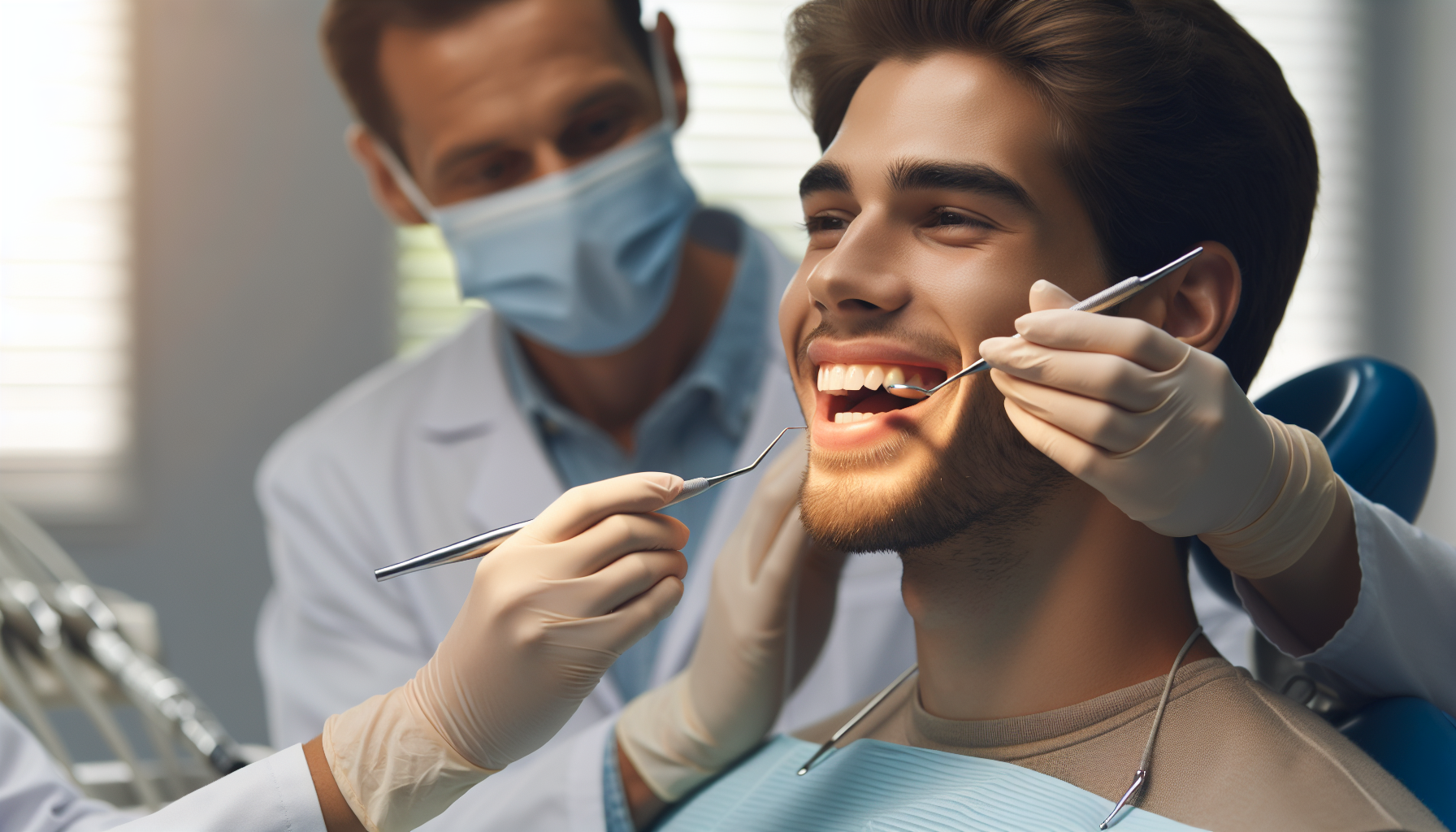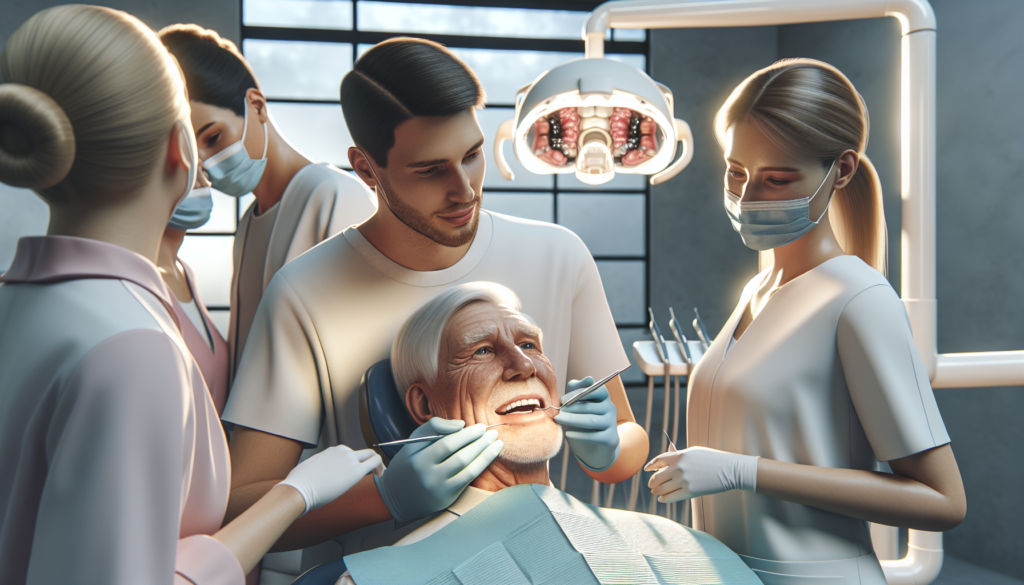Emergency Dental Care Tips for Common Childhood Mouth Injuries
Just like small daily habits can transform your life, consistent dental habits can create a lifetime of confident, healthy smiles. Learn more in The Habit Method.
Every parent dreads that call or cry: “Mom, I hurt my tooth!” Childhood is full of energy, exploration, and—unfortunately—occasional tumbles. According to a Tufts University report, roughly one in three children will experience a mouth or dental injury before adulthood. The good news? Knowing how to respond calmly and quickly can make all the difference between saving or losing a tooth.
This guide explains evidence-based emergency dental care for children, including first aid tips, when to see a dentist, and how to prevent future injuries—because protecting your child’s smile begins with being prepared.
Understanding Common Childhood Dental Injuries
Children are especially prone to common dental injuries due to their active play and developing coordination. Here are the injuries parents encounter most often:
- Chipped or fractured teeth: Cracks or breaks can occur from falls, sports, or biting hard foods. Even small chips can expose sensitive tooth layers and require prompt evaluation.
- Knocked-out (avulsed) permanent teeth: When a permanent tooth leaves its socket completely, immediate action—often within 30–60 minutes—offers the best chance for successful reimplantation.
- Dislodged (loosened) baby teeth: Primary teeth may shift or partially dislodge after trauma. Although they usually aren’t reset, a dental exam ensures no underlying bone or nerve damage.
- Lip, tongue, and gum cuts: Soft tissue injuries can bleed heavily but often heal quickly with proper cleaning and gentle care.
Slight swelling and bleeding are common, but persistent pain, discoloration, or mobility in a tooth may signal pulp or root involvement and should be professionally assessed. The American Academy of Pediatric Dentistry (AAPD) emphasizes immediate attention for any injury affecting a child’s bite or causing visible tooth damage.
First Aid Steps for Pediatric Dental Emergencies
Taking the right steps in the first minutes after an injury can preserve oral structures and minimize complications. Here’s what parents should do:
1. Control bleeding and manage pain
- Have your child rinse with warm water to clean the area.
- Apply gentle pressure with clean gauze for up to 10 minutes to stop bleeding.
- Use a cold compress on the outside of the mouth to reduce swelling.
- For discomfort, age-appropriate over-the-counter pain relief such as ibuprofen may be given as directed.
— American Dental Association (ADA)
2. If a permanent tooth is knocked out
- Locate the tooth immediately and handle it only by the crown (the white part), never the root.
- If possible, gently rinse debris in milk or saline—avoid scrubbing or drying it.
- Try to reposition the tooth into its socket and have your child bite down gently on gauze.
- If replanting isn’t possible, place the tooth in milk, saline, or a tooth preservation kit and head to a dentist or emergency room within 30 minutes.
— International Association of Dental Traumatology (IADT)
3. What not to do
- Do not use alcohol or hydrogen peroxide on oral tissues.
- Do not attempt to reinsert a baby tooth; this may harm developing permanent teeth.
- Avoid applying heat or aspirin directly to gums.
When to Call Your Dentist or Go to the ER
Parents often wonder whether to treat an injury at home or seek urgent care. Consider the severity and symptoms. Call your dentist—or head to an emergency room—if your child experiences:
- Heavy, uncontrolled bleeding that won’t stop after 10 minutes of pressure
- A tooth that’s knocked out or severely displaced
- Facial swelling, bruising, or suspected jaw fracture
- Head trauma, dizziness, or loss of consciousness with the injury
- Signs of infection such as fever, pus, or foul mouth odor several days after injury
When calling your dentist, give clear details: the type of tooth affected (baby or permanent), how long ago the injury occurred, and whether the tooth is fully out or partially attached. Photographs can also help your dental team guide first aid or prepare for treatment upon arrival.
Preventing Future Dental Injuries in Kids
While we can’t wrap kids in bubble wrap, research shows many dental injuries can be prevented through habit-building and protective equipment.
- Use mouthguards: Custom or boil-and-bite guards during sports like soccer, basketball, or cycling reduce trauma by up to 60%.
- Encourage safe play: Teach children not to run with objects in their mouths and to use playground equipment correctly.
- Home safety habits: Install corner guards on sharp furniture edges, discourage roughhousing indoors, and ensure rugs don’t slip.
- Schedule regular checkups: Routine visits every six months help your dentist identify enamel weaknesses or existing tooth wear that increase injury risk.
— American Academy of Pediatric Dentistry (AAPD)
Parents can also model consistent oral hygiene: brushing twice daily with fluoride toothpaste and choosing balanced, low-sugar snacks that strengthen enamel. Prevention begins with daily habits anchored in consistency—small actions that grow into lasting protection.
Long-Term Oral Health After a Dental Injury
Once the emergency subsides, your dentist’s follow-up care ensures proper recovery. Healing doesn’t stop after the bleeding ends—it continues for months as teeth, nerves, and gums stabilize.
- Follow-up visits: Your dentist may recommend X-rays or vitality testing to monitor pulp healing and root development.
- Possible restorations: Minor chips might be repaired with bonding, while larger fractures can require crowns or root canal therapy.
- Watch for warning signs: Pain, color changes (gray or yellow tint), or gum puffs above a healed tooth may indicate complications such as pulp death or infection.
- Promote resilience: Encourage soft foods for several days and maintain fluoride use to support enamel recovery.
— Journal of the American Dental Association
Frequently Asked Questions
1. What should I do if my child chips a tooth and there’s no pain?
Even if there’s no pain, schedule a dental exam within a few days. Minor chips can expose dentin or enamel cracks that may worsen over time.
2. Can a baby tooth be reimplanted after being knocked out?
No, baby teeth should not be reinserted. This could injure the developing permanent tooth underneath. See your dentist to check for tissue damage instead.
3. How soon should I see a dentist after a dental injury?
Immediately if a permanent tooth is knocked out or displaced. For chips or soft tissue injuries, it’s best to schedule a visit within 24–48 hours for an evaluation.
4. Is milk really the best medium for storing an avulsed tooth?
Yes. Milk helps maintain viable periodontal cells on the root surface until a dentist can replant the tooth. Saline or a tooth preservation kit also works well.
5. How can I help my child stay calm during a dental emergency?
Stay calm yourself first. Offer reassurance, keep your tone gentle, and focus on slow breathing together. Children mirror your cues for safety and calm.
Conclusion
Childhood mouth injuries may be common, but swift, knowledgeable action can save teeth and safeguard confidence. Keep your dentist’s number accessible, learn basic first aid, and reinforce safety habits at home and during play. Every small step—just like every small habit—builds resilience.
To deepen your understanding of habit-building for long-term well-being, explore The Habit Method and discover how consistent care today shapes confident, healthy smiles for life.
Post Disclaimer
DentalUp is for educational purposes only and cannot accept personal dental information such as x-rays, photos, or treatment details. See full disclaimer here.





